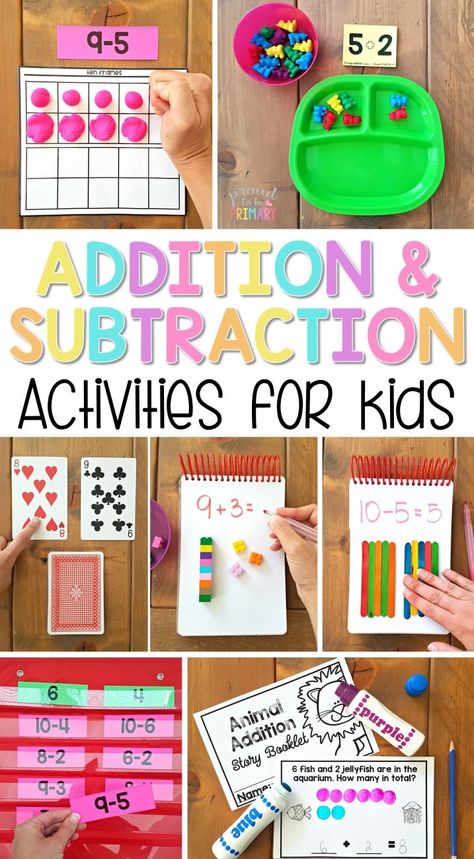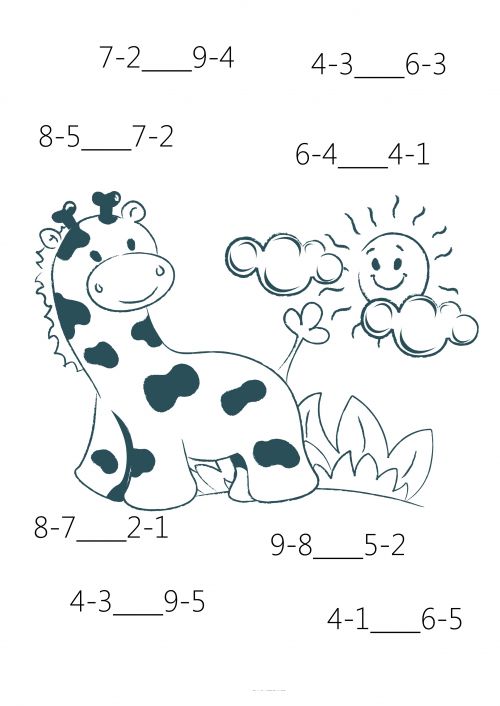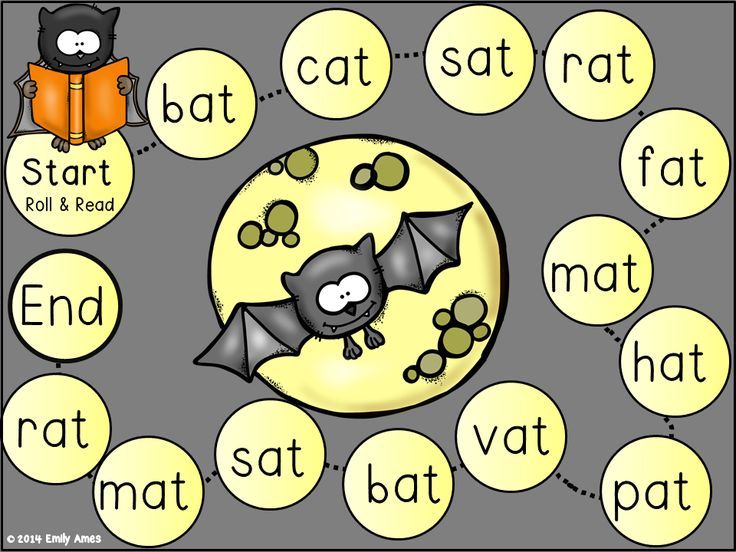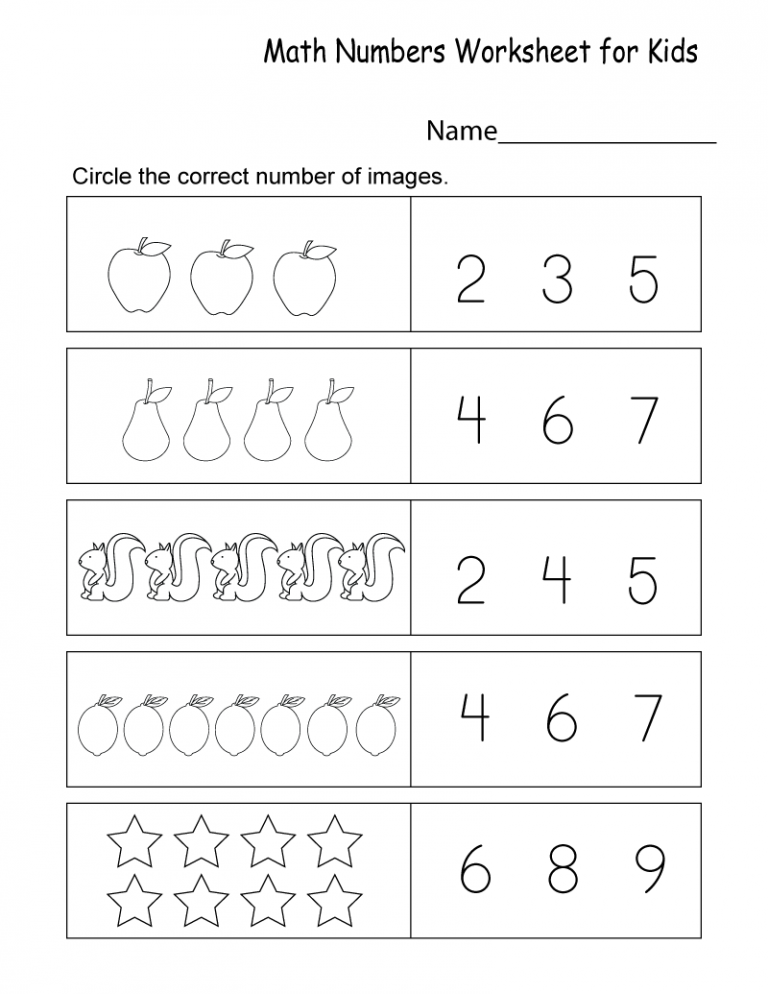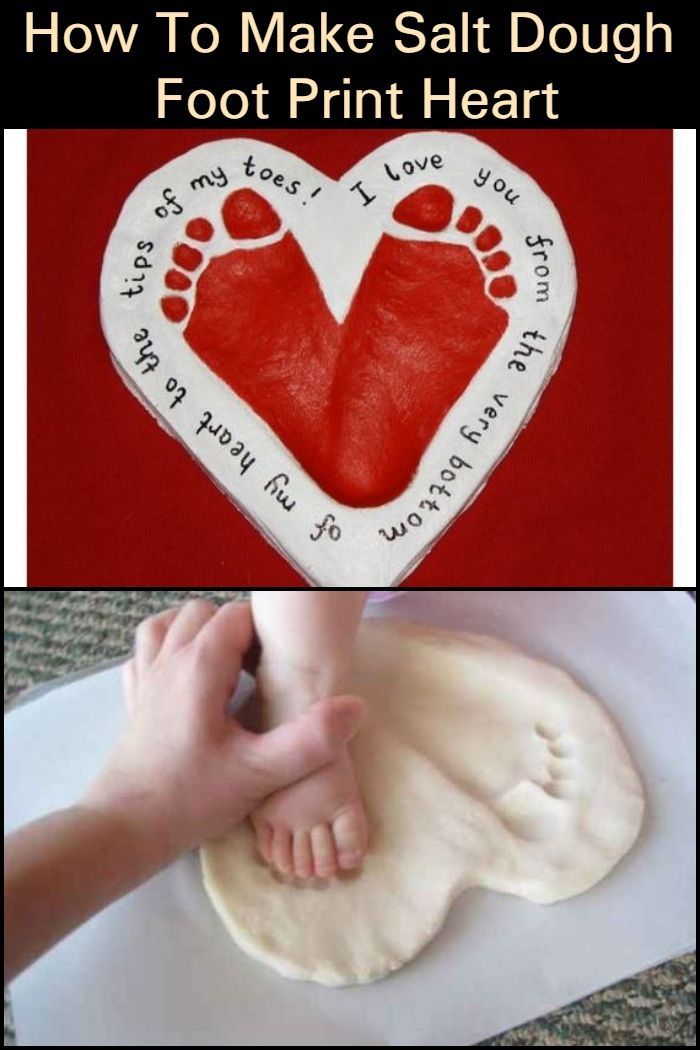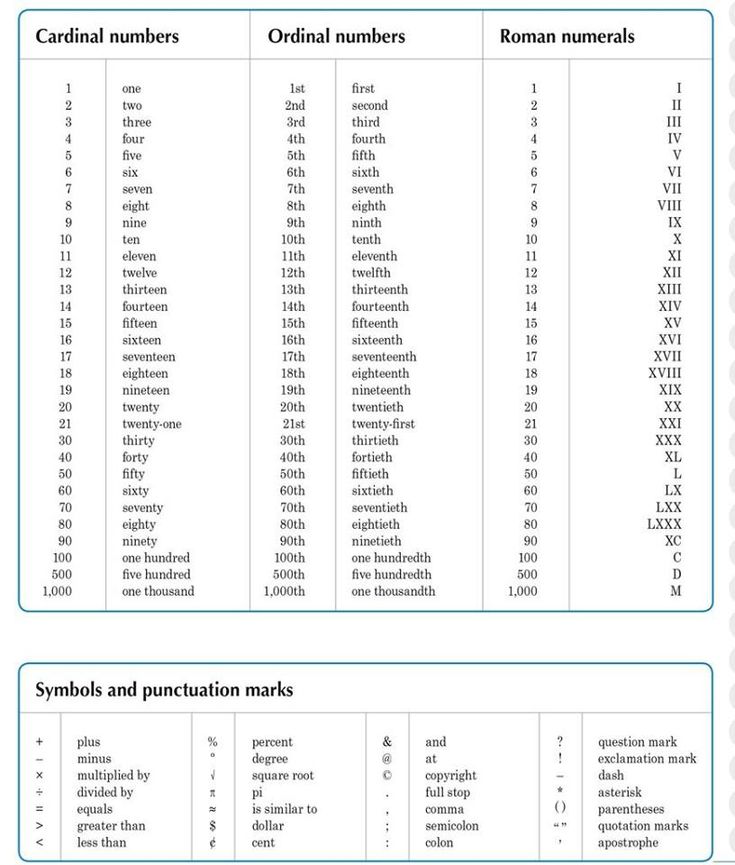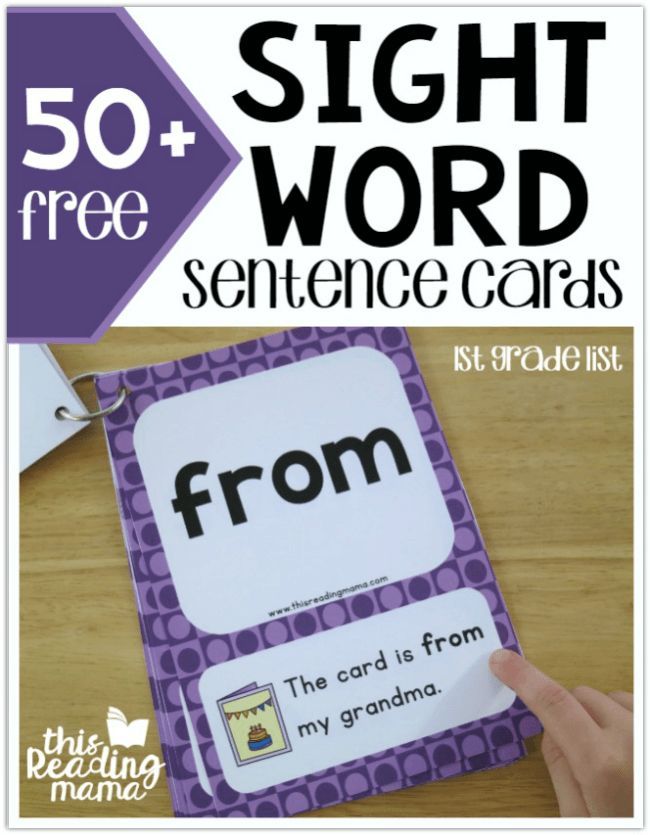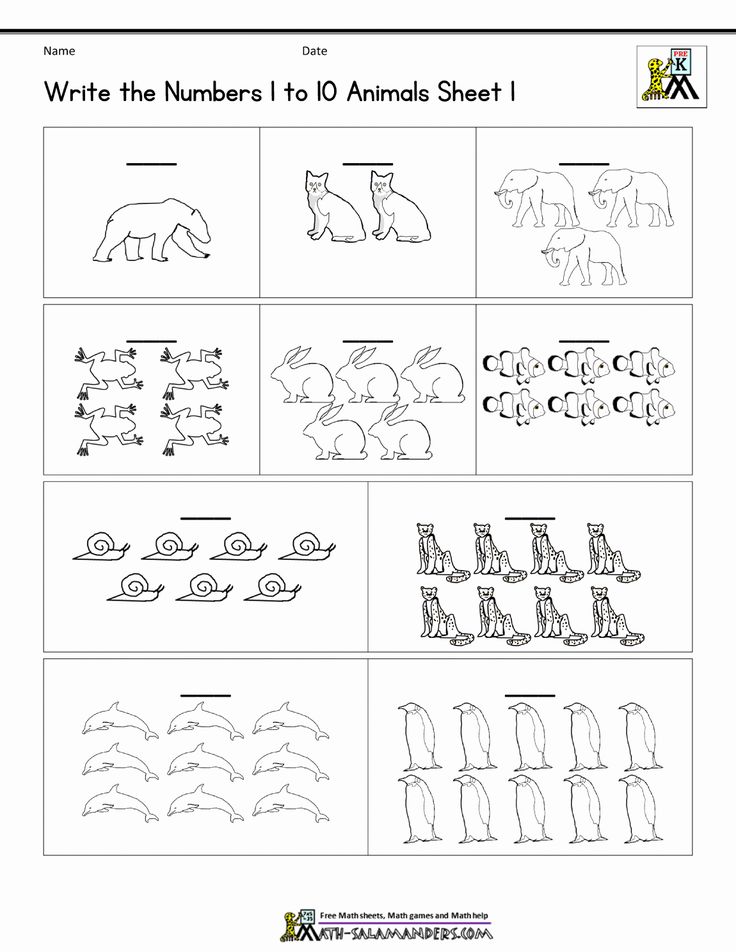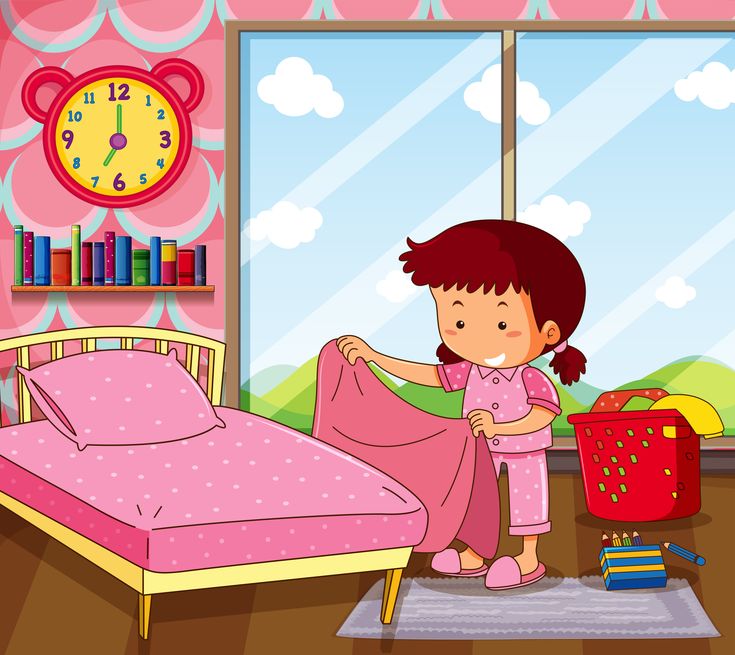Hands on preschool math activities
Hands-On Math Activities for Preschoolers
Disclosure: This post contains affiliate links to Amazon. See my disclosure policy for details.
Math is so fun to teach to preschoolers because there are a lot of daily activities that incorporate math. Preschoolers don’t need worksheets for math…they should learn through play and hands-on activities.
1. Patterns with Bears
Counting Bears are a great math manipulative to use with preschoolers. You can sort, count, or use them with patterns.
I created some pattern cards to help with this. The first page is an AB pattern, meaning two colors alternate in the pattern. The second page is an ABC pattern, meaning three are three colors in the pattern. For this activity, your preschooler will set the colored bear on top of the matching color to create a pattern. On the ABC pattern cards, the last circle is left empty. That is for your child to tell you what color it should be.
You can get the color patterns printable at the bottom of this post.
Math Skill: Patterns and Relationships
You can find more pattern activities here.
2. Sorting Colors with Bears
Sorting is a skill preschoolers should work on a lot. One way to sort is by color. We do this with our counting bears and a sorting mat.
You can get the sorting mat printable at the bottom of this post.
You can even use colored tape and pom poms to practice sorting! Add in some tweezers for some extra fine motor practice.
We also love counting mats! These are great for learning to count and working on one-to-one correspondence.
Math Skill: Patterns and Relationships
3. Money Muncher
A fun way to work on sorting is with the Money Muncher! It’s also a great activity for fine motor skills. To see all the fun details, click here.
Math Skill: Patterns and Relationships
4. Sorting Jelly Beans
Anytime we work with candy, my kids love it! You can sort M&Ms or jelly beans or whatever! To see how we did this with jelly beans, click here.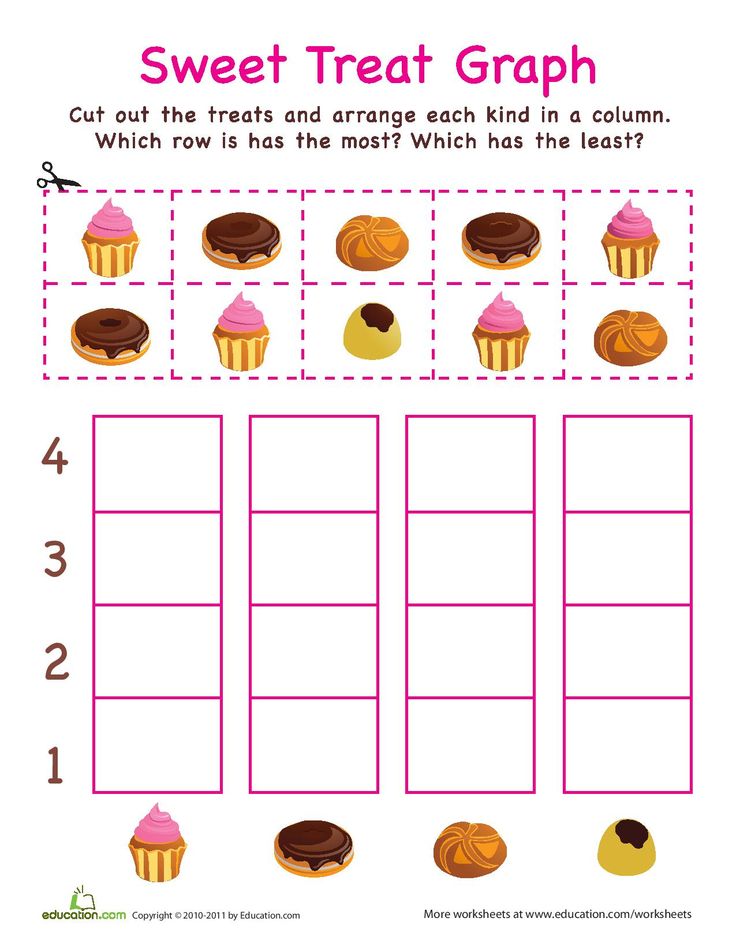
You can get the jelly bean sorting printable at the bottom of this post.
One more idea for sorting is by using toy animals. Have them sort by different characteristics, such as land animals and sea animals.
Math Skill: Patterns and Relationships
5. Graphing
Graphing is always good to introduce to preschoolers. It doesn’t have to be complex, but you can do a simple activity like graphing the types of transportation on a bar graph and use small pictures or toys (or I used erasers from The Dollar Tree).
Make graphing hands-on using apples! Even young preschoolers can begin learning about graphing with this activity.
Check out this free gumball graphing activity right here.
Math Skill: Patterns and Relationships
6. Shape Wheel
This is a fun activity for learning shapes! Just print this shape wheel and draw the same colored shapes onto clothespins.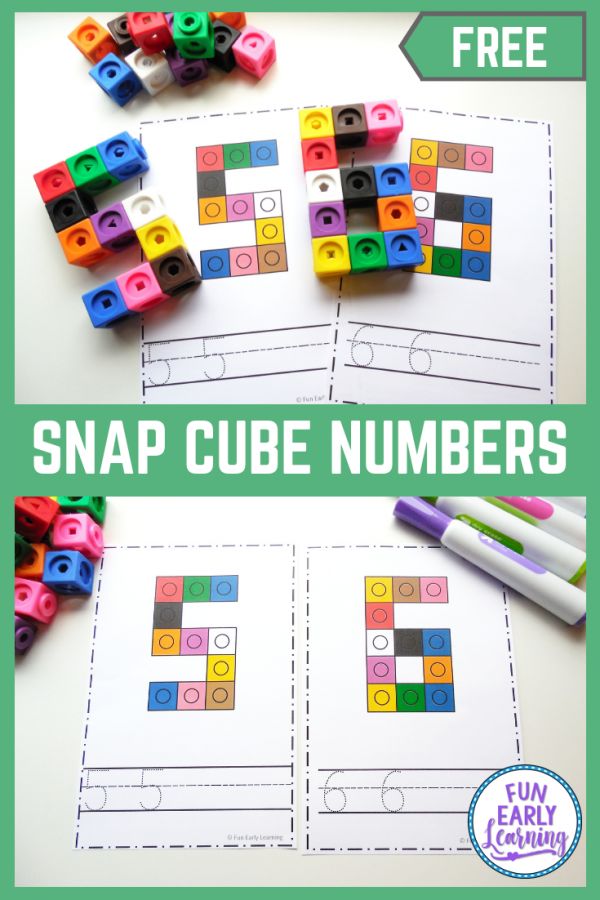 Have your child match the clothespin to the shape on the wheel. This is great for working on fine motor skills!
Have your child match the clothespin to the shape on the wheel. This is great for working on fine motor skills!
You can get the shape wheel printable at the bottom of this post.
Math Skill: Geometry
7. Shape Sorter
An easy way to practice shapes is with a Shape Sorter! I bought these shapes at Michaels Craft Store many years ago, but these 3D geometric shapes would be a good option if you’re interested in creating a Shape Sorter. Check out this post for details on how to make this easy math activity.
Math Skill: Geometry
8. Noodle Shape Cards
A neat sensory activity and a fun way to learn shapes are with noodles! See the post here to download the free shape cards.
Math Skill: Geometry
9. Foam Sticks
Learn shapes in the tub with these foam sticks! You can see how we did this here.
Another fun way to practice shapes is with the cookie shapes matching activity!
And my favorite way to teach about shapes is with my shape rhymes!
10.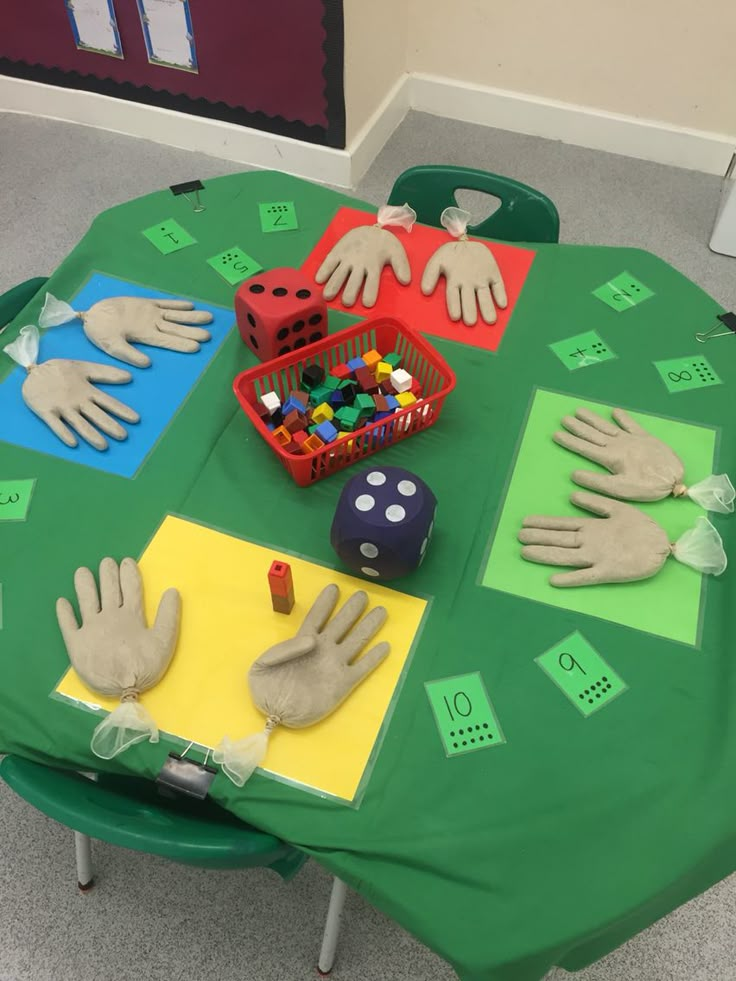 Dice Game
Dice Game
This is a really fun game! I took this Melissa & Doug wooden toy and put white circle stickers on the top of the pegs. I wrote numbers 1-6 and had 2 stars. I had my son roll the dice and whatever number it landed on, he would pound with a toy hammer. If the number he rolled was already down, he hit the star. Not only was this fun for him, but he was able to “subitize”, which simply means to recognize numbers instantly without counting the dots.
Math Skill: Number Concepts
11. Star Number Cards
Practice counting and recognizing numbers with star number cards. This one is great for working on one-to-one correspondence and fine motor skills.
You can get the star number printable cards at the bottom of this post.
Math Skill: Number Concepts
12. Ladybug Math
We made these adorable ladybugs and they were a hit! Not only were they fun to play with, but we did a lot of counting and sorting with them.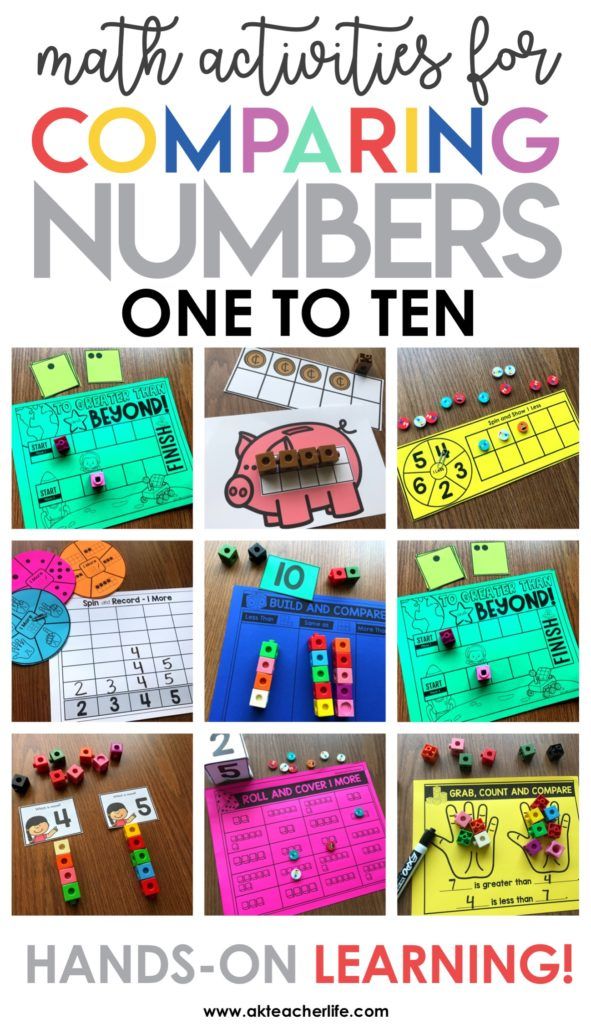 Read all about it here.
Read all about it here.
Math Skill: Number Concepts
13. Balloons
Learn the order of numbers with this really fun game involving balloons! Check out the details here.
Math Skill: Number Concepts
14. Estimating with Water
We learned about estimation with a dropper with some fun, hands-on water activities.
Math Skill: Measurement
15. Pouring and Comparing
We practiced pouring skills with rice into these beakers. Then I had my son line them up from biggest to smallest. Using comparative words like big/small or empty/full help teach preschoolers about simple concepts of measurement. This is simple and you could elaborate on this activity.
One more easy way to practice measurement is with Unifix cubes. Place different lengths of tape on the floor or poster board. Then have your child use Unifix cubes to measure the lines.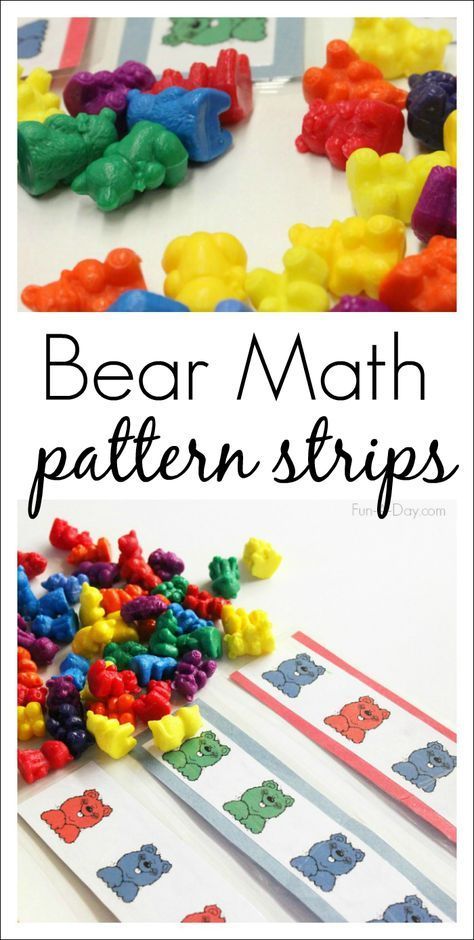 This is a simple way to practice counting, measuring, and comparing lengths.
This is a simple way to practice counting, measuring, and comparing lengths.
Math Skill: Measurement
Lastly, check out this really easy and fun way to practice counting!
If you’re looking for digital math activities, make sure to check out my counting activities using Google Slides.
If you’d like to download the 5 free printables I shared in this blog post, just click on the button below!
Preschool Math Activities that are Super Fun!
If you are looking for preschool math activities then you're in luck! I gathered my favorite hands-on math activities and math center ideas for preschool and I am sharing them here!
Math skills are so important and finding playful and engaging ways to teach those skills to preschoolers is crucial. Whether you teach math to a classroom full of preschoolers or homeschool one or two at home, it's important to use hands-on math experiences.
This is a list of the best preschool math activities that I could find! I hope they will be super helpful to you.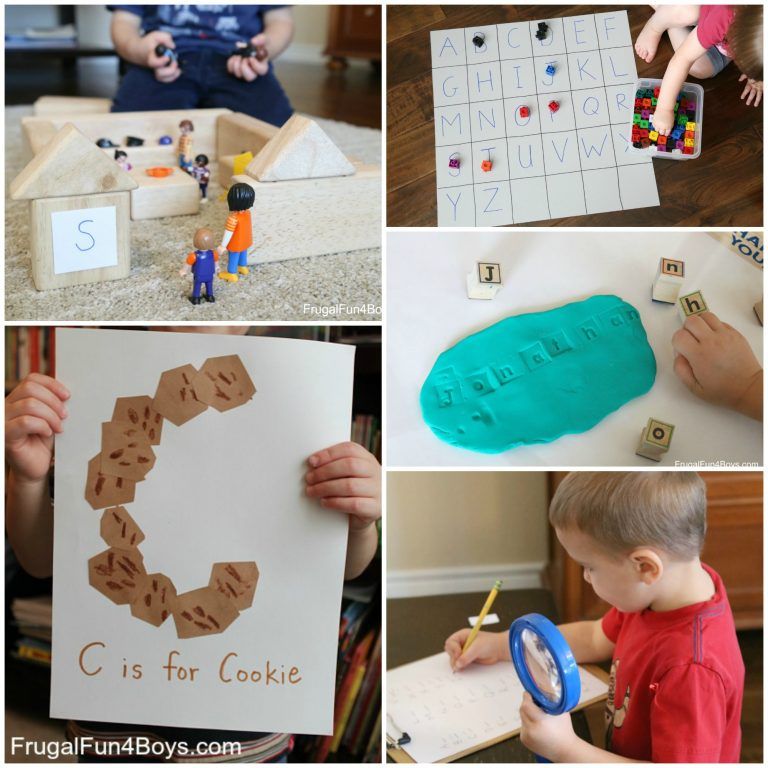
Hands-On Preschool Math Activities
1. Roll and Dot the Number is a quick preschool math game that will teach kids to identify numbers and count while learning one to one correspondence! It is one of our favorite preschool math activities!
2. This Build and Measure Block Center is such a neat way for kids to explore measurement!
3. These Counting Bears Number Strips are a hands-on way for toddlers and preschoolers to learn numbers, counting and even colors.
4. These Tree Play Dough Numbers Mats are a great way to work on a number of math skills including counting to 10!
5. Work on color recognition and sorting with these Button Sorting Cups.
6. This Simple Fine Motor Counting Math Tray is super easy to set up and provides excellent fine motor practice too.
7. Grab your craft sticks and make these Colors and Patterns craft sticks for your math center!
8. Teaching Symmetry to Preschoolers with LEGO DUPLO is perfect for teaching symmetry to preschoolers and young kids.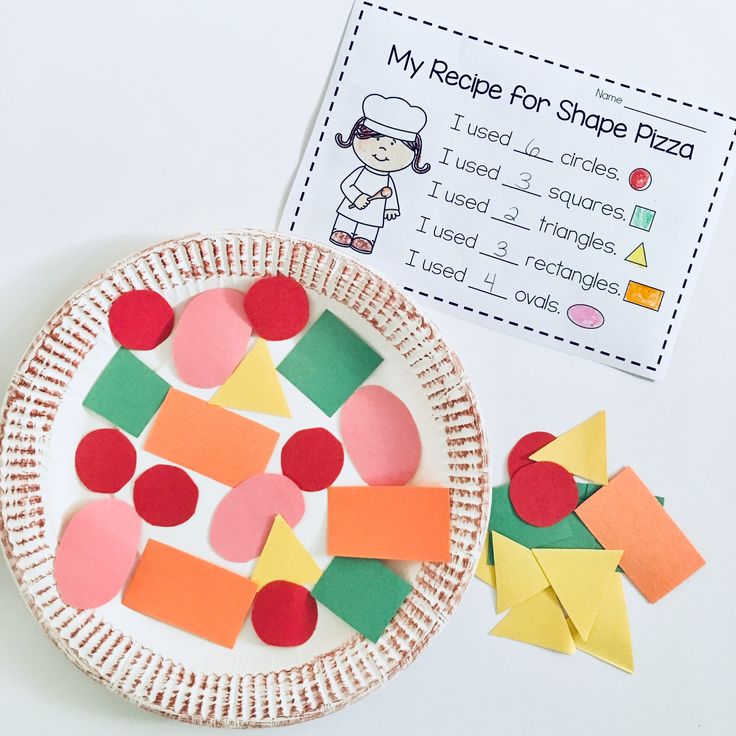
9. Your kids will have a blast learning to count with Bugs in a Jar!
Preschool Math Activities that are Fun and Engaging!
10. These DIY Tactile Counting Sticks are very easy to make and are perfect for kids who are learning to count.
11. Measuring with Bear Counters is an excellent way to introduce preschoolers to measurement!
12. I love this Play Dough Geometry activity! All you need is play dough and craft sticks!
13. This Pattern Making activity only requires a few common supplies. It's a hands-on way to introduce young preschoolers to patterns.
14. Number learning is really fun with this Car Parking Numbers Game!
15. Your kids will love learning about shapes with this Preschool Shape Scavenger Hunt!
16. This Number Pocket Game is a hands-on way for young preschoolers to learn numbers.
17. This Car Color Sort math activity is a great way for kids to practice sorting while playing with cars.
18. This Smack the Number Counting Game is fun way to practice number recognition and one to one correspondence. This was one of our favorite preschool math activities when my son was younger.
This was one of our favorite preschool math activities when my son was younger.
Math Activities for Preschool Math Centers
19. Make counting practice a game with this Race to Fill the Cup activity! This is a must-do when it comes to preschool math activities!
20. Finding shapes with I Spy Shape Glasses is a totally cool idea!
21. Counting and Measuring with LEGO is a fun way to work on counting, ordering and measuring numbers!
22. Take the learning outdoor with this super cool Pool Noodle Abacus!
23. This Button Counting Activity is a hands-on way for preschoolers to learn numbers and practice counting!
24. Work on fine motor skills and counting in this neat Counting beads on pipe cleaners activity!
25. Use clothespins to reinforce fine motor skills, colors and match numbers in this Hickory Dickory Dock Matching Clothespins activity!
26. This Printable Number Puzzle is a great way to work on a variety of ways to represent numbers.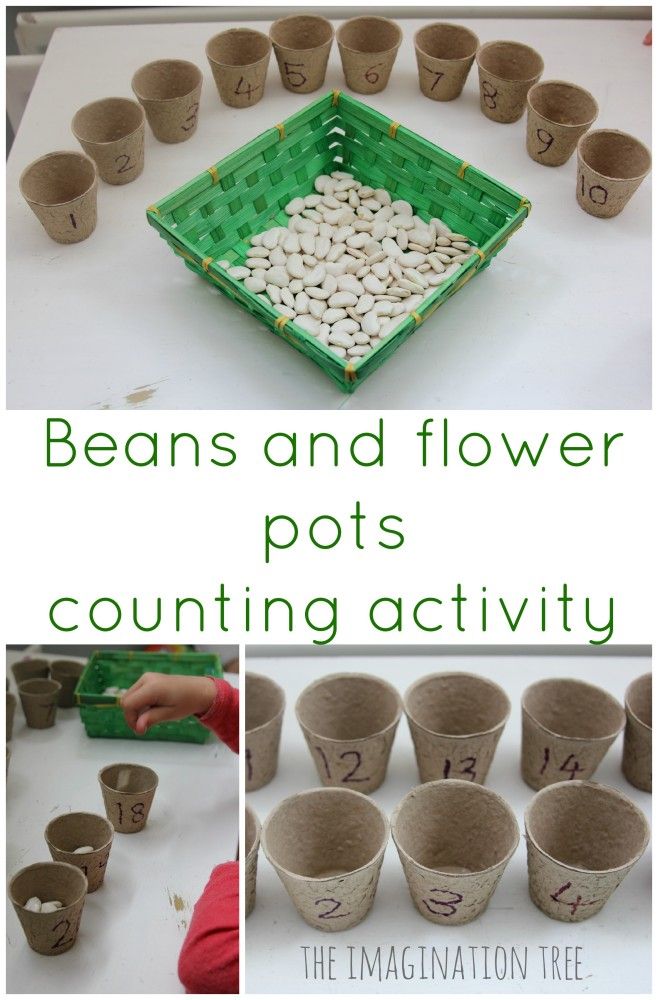
27. This Play Dough Math Invitation is open-ended and will keep preschoolers busy while learning a variety of math skills.
Even More Hands-On Math Activities for Preschoolers
28. These fun Farm Animal Rainbow Counters activity helps preschoolers learn to count and compare more or less!
29. Your kids will work on direction following, ordinal numbers and important vocabulary in this Matching Paths activity!
30. Your kids will have fun counting with this Ladybug Counting Busy Bag!
31. Counting Nature is a great way to work on counting and explore nature!
32. Your kids will have a ton of fun with Play Dough Addition.
33. Exploring Symmetry with Art is an awesome idea!
34. Use a Numbered Nature Tray to encourage number skill work while exploring nature!
35. This Play Dough Color Match Learning Activity is a fun way for kids to learn colors, matching, and sorting!
36. Your kids will love these 3 Counting Bear Activities for the Balance Scale!
37.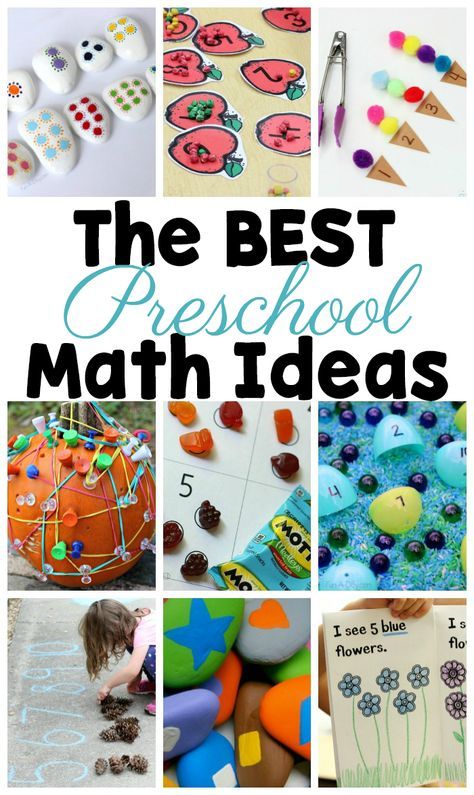 This Counting Math Game for Kids is great for practicing one-to-one correspondence!
This Counting Math Game for Kids is great for practicing one-to-one correspondence!
38. LEGO and Math combine in these LEGO Pattern Cards. A great activity to work on hands-on pattern building!
39. Counting Blocks While Building Towers is a fun way to learn with numbers!
40. These printable shapes are so inviting and are jam-packed with learning! You definitely have to add this to your list of preschool math activities to try with the kids!
Check out all of our other preschool math activities!
And because I LOVE combining literacy and math, here are 60 fantastic Math Picture Books for Preschool. Swap these in and out of your math center all year-long!
I hope this list will help you plan preschool math activities for the year ahead. I am really excited to do so many fun and engaging math activities with my kids this year!
I would love for you to share your favorite math activities for preschoolers in the comments!
Program for the development of fine motor skills of the hand and elementary mathematical representations of preschool children "Entertaining Pictures"
Explanatory note.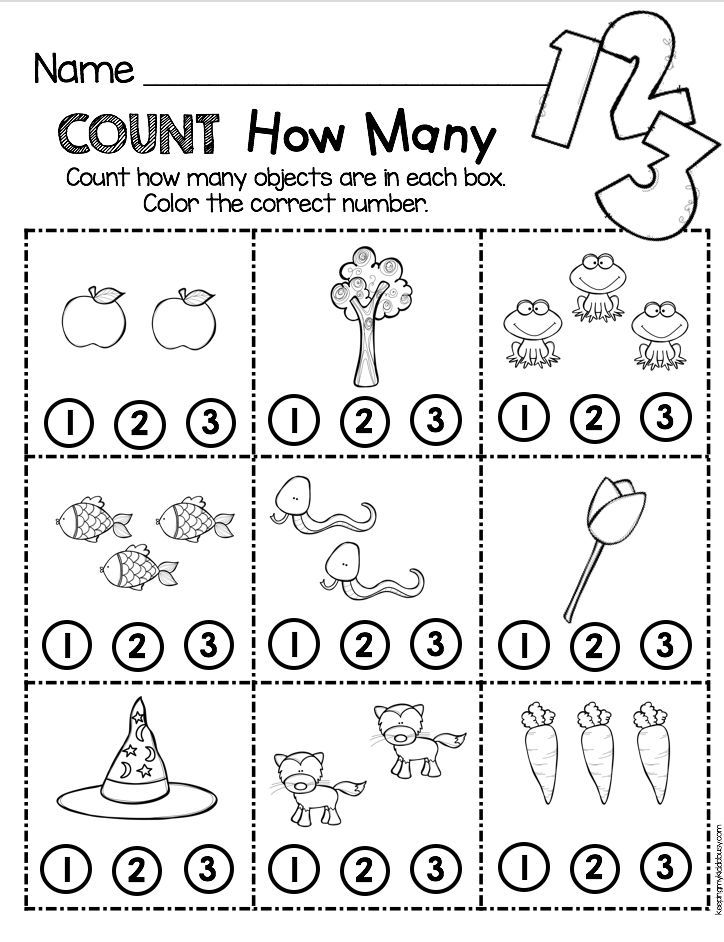
From the moment a pencil falls into a child's hands, and this happens quite early, with great pleasure he draws everything for them on paper, from strokes and doodles.
Gradually developing, the child moves to a schematic representation on place first of individual objects, and then of entire graphic stories.
“The hand is the outward brain,” wrote Kant. It was found that the level development of children is directly dependent on the degree of formation of subtle movements of the fingers.
One of the important tasks of the modern school is the work on the formation calligraphically correct writing, since the very process of such writing serves an important means of educating aesthetic feelings, volitional intellectual qualities of a junior student. To do this, it is necessary to train the child's hand in preschool age. Drawing graphic shapes is a great way to develop small muscles of the child's hand, an interesting and exciting activity, the results which will affect the ability to write beautifully and think logically.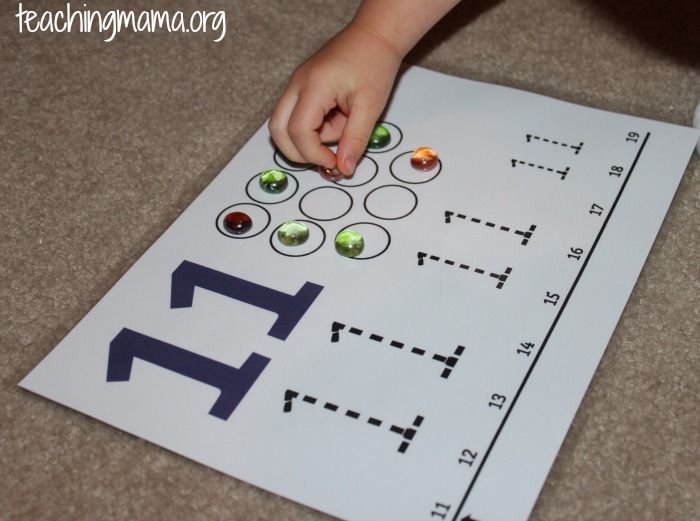 Wherein problems and mathematical development are solved: counting and counting, orientation in space, orientation on a sheet in a cage. Graphic dictations will help prepare the child's hand for writing, develop spatial imagination, teach the baby's dexterity when handling a pencil and pen and accuracy in hand movements, which will make it possible to lay the foundation for the formation of a calligraphically correct letters.
Wherein problems and mathematical development are solved: counting and counting, orientation in space, orientation on a sheet in a cage. Graphic dictations will help prepare the child's hand for writing, develop spatial imagination, teach the baby's dexterity when handling a pencil and pen and accuracy in hand movements, which will make it possible to lay the foundation for the formation of a calligraphically correct letters.
You can offer an additional task to shade the drawing with oblique lines, straight lines, “embroider” a figure with a cross or just color it. On each finger gymnastics is mandatory.
Discussing the results and the quality of the assignment teaches the child to self-assessment and self-control, which is an important component of learning activities and useful in school.
In addition to graphic dictations, mathematical Pictures. They serve to develop the computational skills of mental counting, attention, observation, memory, thinking, imagination, coordination of movement.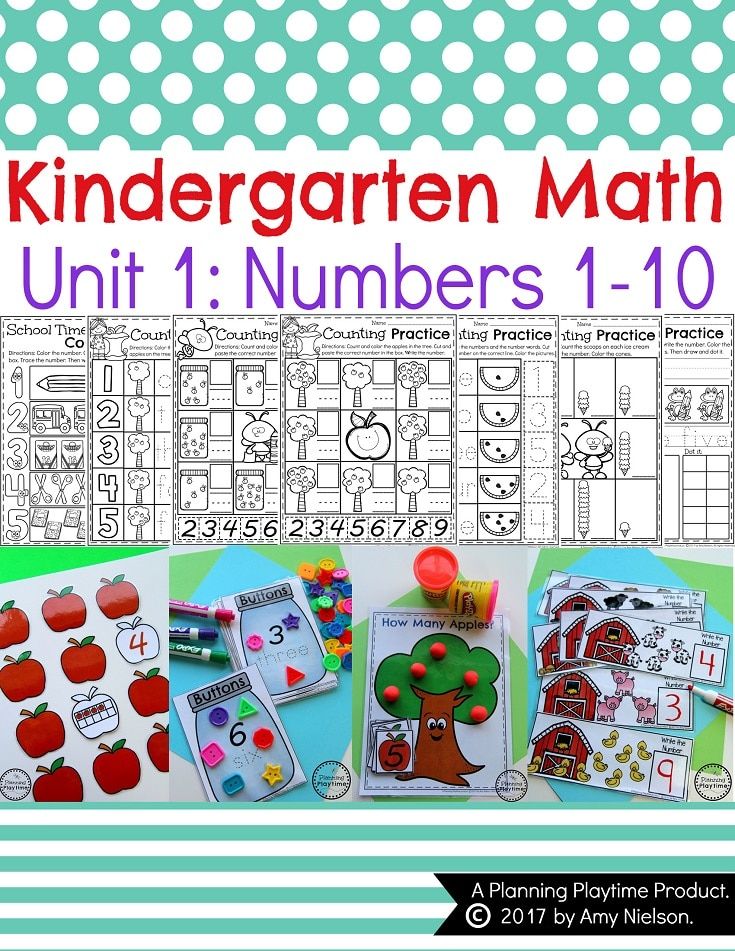 They develop in children such qualities as accuracy, patience, perseverance.
They develop in children such qualities as accuracy, patience, perseverance.
To complete these tasks, the child must be able to count well and quickly, know the graphic designations of numbers. Do not forget that the child quickly gets tired, it is better to color the drawing in two stages
- developing object-spatial environment;
- a room for classes, equipped with the necessary educational and gaming aids;
– Literature on child pedagogy and psychology;
– the latest scientific developments in this field;
– special printed material and colored pencil sets by quantity children;
- temporary opportunities: one lesson per week for 20-25 minutes;
– the age principle of group formation;
– taking into account the individual characteristics of each child;
- the principle of voluntariness.
Optimization of the educational process in the kindergarten method room:
- own information stand, advertising;
– literature on children's pedagogy and psychology, special literature;
- new scientific developments on this topic;
– development of conversations and consultations with parents;
- folders - presentations of this program;
- detailed developments for each lesson;
- a set of necessary printouts for each child.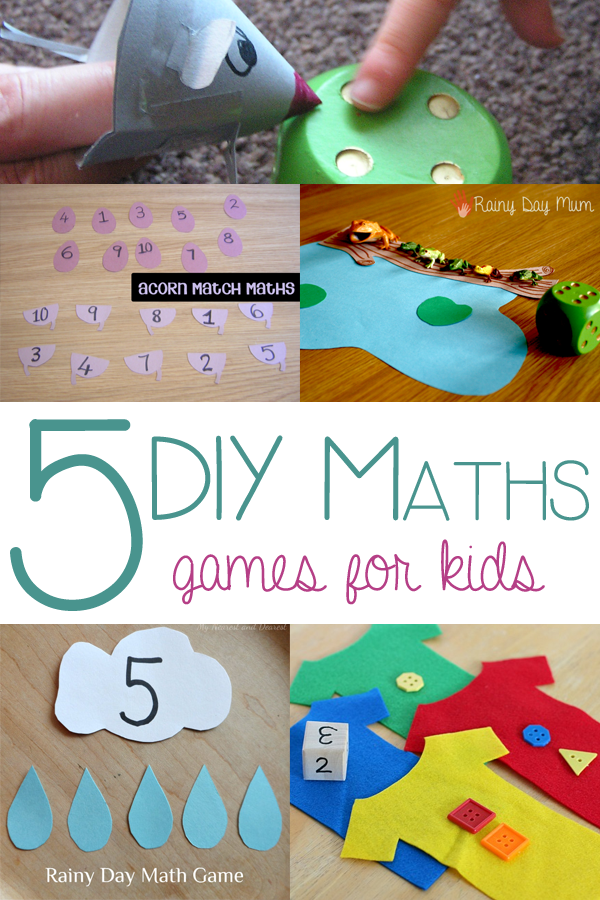
Program Features:
- Embodiment of the concept of a personality-oriented development model and raising children.
- Developmental tasks are set and solved taking into account individual opportunities for the development of each child, the mastery of methods of action.
- An integrated approach to learning, relationship with other types activities, the use of various methods and techniques in teaching.
- Using the latest developments on the topic “Preparing a preschooler for writing”, such as graphic dictations and mathematical pictures.
- Application of health-saving technologies.
- All tasks are united by a single plot and built on the principle of simple to more complex.
- An adult is in no hurry to point out mistakes to children, giving them the opportunity to notice them independently, and encourages children to independently search for solutions, teaches mutual assistance.
The novelty of this program is determined by the use of graphic dictations and math pictures to prepare a preschooler for writing.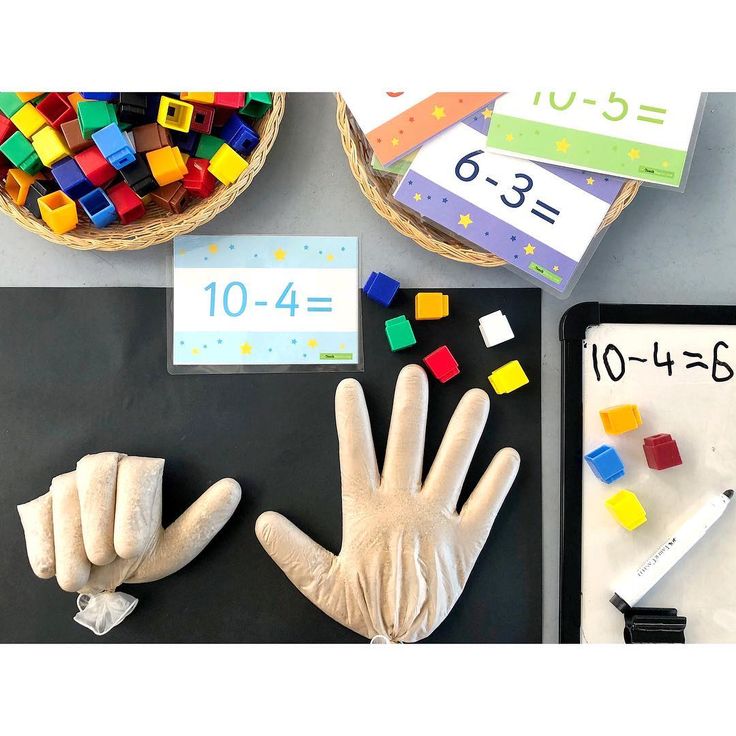
Note: when working with preschoolers, teachers navigate without any restrictions, no competitive selection.
Purpose: development of fine motor skills of the hand and elementary mathematical representations in children through graphic dictations and mathematical pictures
Tasks:
Educating children skills:
- navigate on a sheet in a cell;
- identify the structural units of the cell;
- perform counting and counting cells, focusing on digital pointers;
- exercise in various types of hatching;
- solve examples for addition and subtraction;
- help a peer if necessary;
- to speak freely with adults about the tasks performed, to be able to explain the rules and sequence of actions;
- determine the color for painting, focusing on digital indicators;
- form the correct posture when writing;
- developing dexterity when handling a pencil;
- development of spatial imagination, steady attention, eye.
Main areas and content of activities
The program includes three areas, the work in which is designed for one year: with children 5-6 years old.
1. Graphic dictations.
Includes graphic tasks that form skills in children: navigate on a sheet in a cell; by counting the specified number of cells, create silhouette images of animals; act in a certain sequences, find and correct errors yourself. Develop attention, memory, logical thinking.
2. “Hatching”.
Includes specially designed hatching exercises, various ways to help develop the eye, perseverance, small muscles of the hand.
3. “Math pictures”.
Includes specially designed pictures for coloring, allowing to develop in preschoolers the ability to solve examples for addition and subtraction within 10, the ability to correlate a certain number with a certain color, focusing on digital indicators that promote development in children perseverance, attention, small muscles of the hand.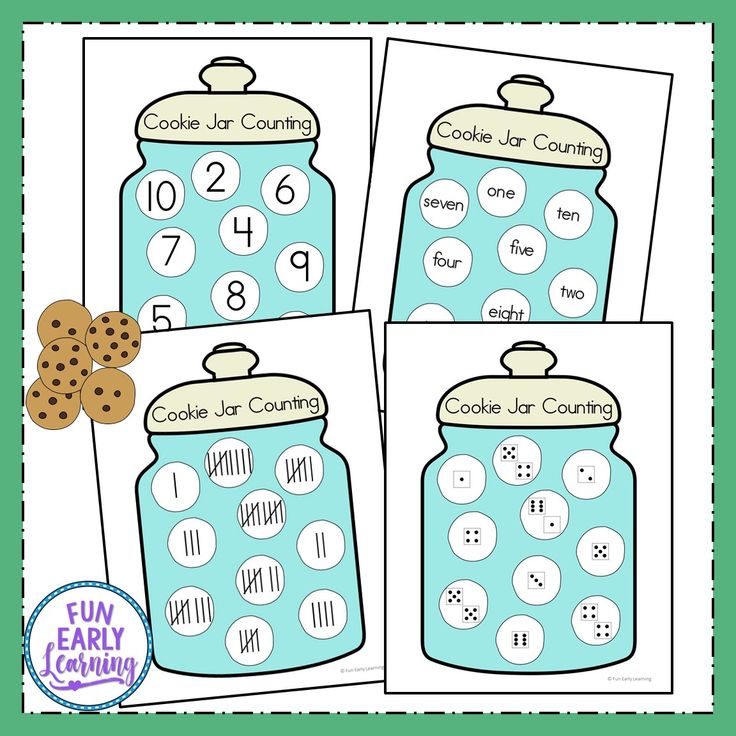
Classes are held with all children aged 5-6 without any selection. The optimal number of children is 10-14. We approach each stage sequentially, but at the same time they can be combined.
Classes are held once a week, lasting 20–25 minutes. Organized classes start from October, after the children repeat earlier studied material, they must know numbers, be able to solve examples within 10.
Individual work, if necessary, is carried out additionally 1 time per a week no more than 10-15 minutes.
Basic form of work – training and development classes in groups and subgroups, as well as individual lessons.
Additional form of work - consultations of a teacher and a psychologist with parents and children.
Approximate construction of the lesson:
I. Introductory part. (2 minutes.)
The goal is the psychological attitude of children to joy, smile, holiday;
Establishing a benevolent emotional contact.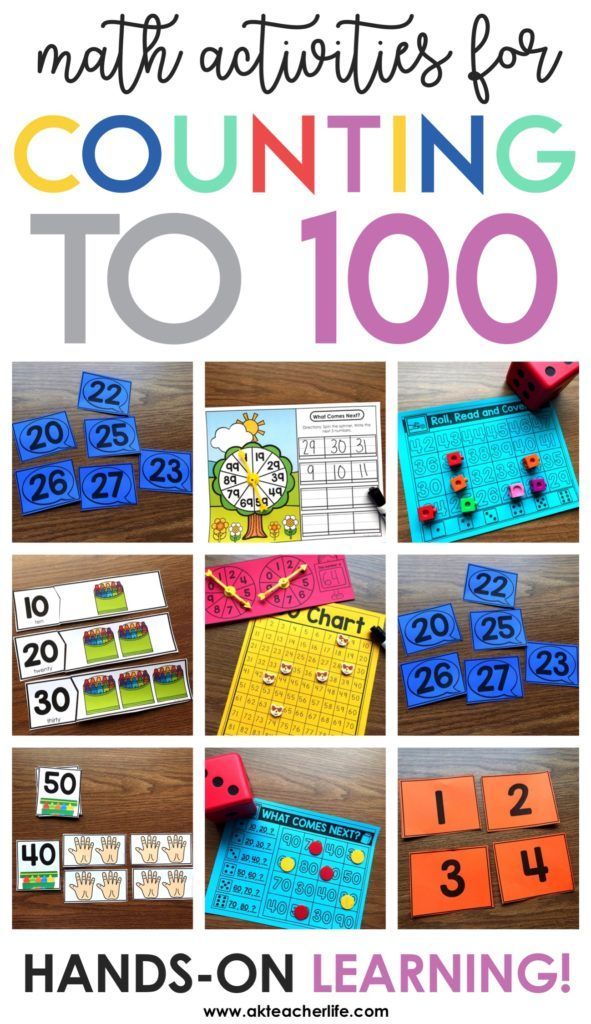
Goal setting.
II. Main part. (Two types of construction depending on the type of activity.)
| 1. Graphic dictation. Fizkultminutka Hatching with a break for finger gymnastics. | * 2. Math picture with obligatory breaks for physical education minutes and finger gymnastics. |
The goal is to master the basic skills defined by the tasks and the topic. (15–20 minutes.)
III. Conclusion . Brief analysis - evaluation - sessions (2 minutes).
Purpose - encouragement, psychological support for children, their creative initiatives.
Object-spatial environment.
Successful work requires a specially organized object-spatial environment: a room with the presence of both a place to work children at the tables, and enough space for physical education.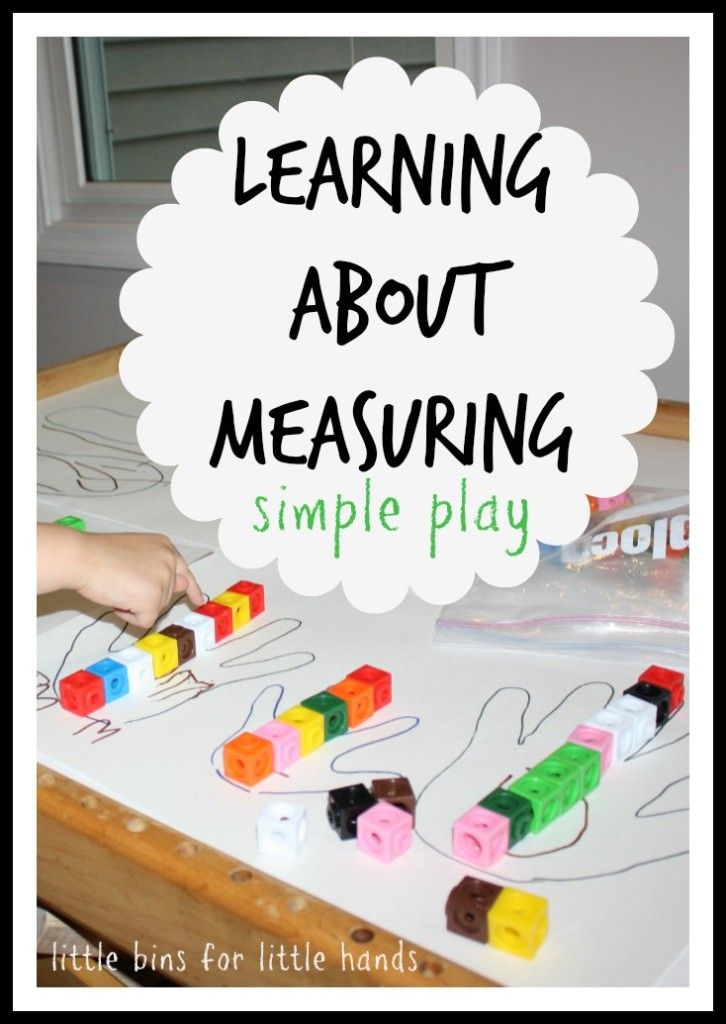 Availability printed materials, sets of colored pencils for each child, blackboards demonstration for showing samples, colored crayons.
Availability printed materials, sets of colored pencils for each child, blackboards demonstration for showing samples, colored crayons.
Expected results:
- the child is well oriented on the sheet in the cell, highlights its structural parts;
- focusing on digital pointers, can independently count the cells in a given direction;
- knows the numbers of the first ten well;
- can produce hatching of a given type, according to the model and word of the educator;
– quickly and correctly reads and solves examples for addition and subtraction within first ten;
- selects the color for painting, focusing on the digital index;
– when painting, it does not allow gaps and crossings over the boundary line;
- can independently find and correct errors during construction, by repeated action;
- maintains correct posture during classes;
- the child's hand can perform the necessary actions for quite a long time (shading, hatching) without overvoltage;
- the child and parents perform a common task as equal partners.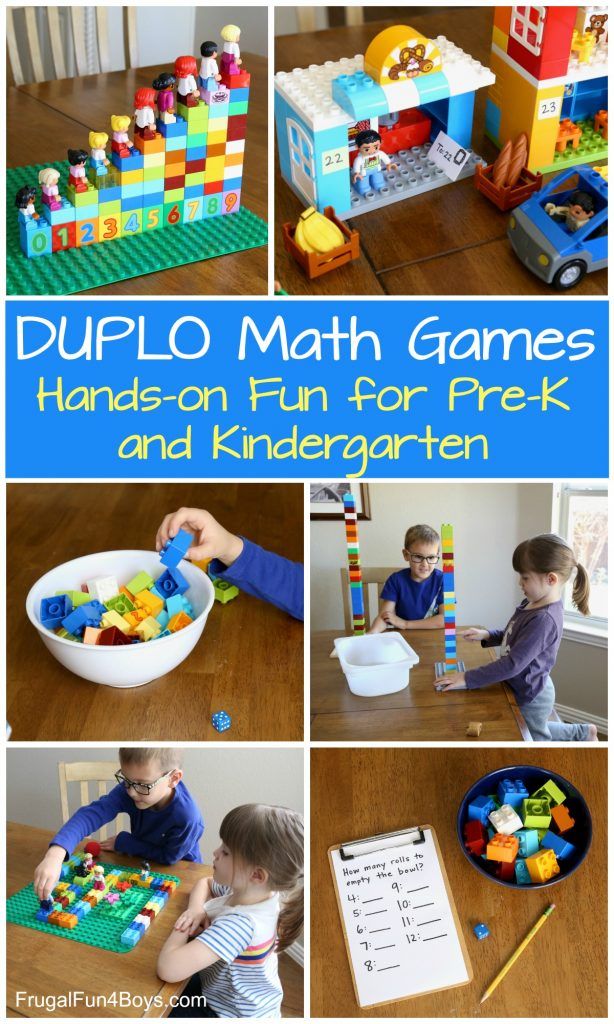
Educational and thematic plan for blocks.
| No. | Name of blocks | Joint work of the educator and children | Children perform with partial help of a teacher | Independent performance by children. |
| 1 | Graphic dictations | 1 (as part of) | 2 (as part of) | 12 (as part of) |
| 2 | Hatching, drawing | 3 (as part of) | 2 (as part of) | 10 (as part of) |
| 3 | Math pictures | 2 | 3 | 8 |
| Total: | 2 + 4 as part of | 3 + 4 as part of | 8 + 22 as part of |
Total 28 lessons.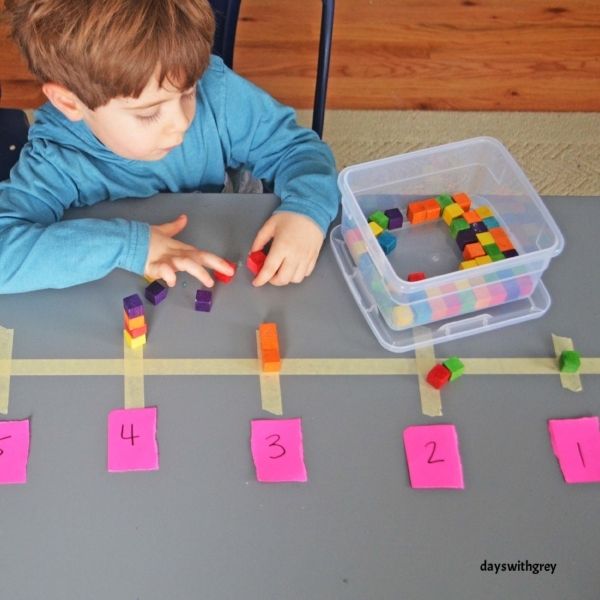
Weekly curriculum and sample developments see Appendix 1.
References
- Logic and mathematics for preschoolers. E.A. Nosov. R.L. Nepomnyaschaya. "Childhood-Press" 2006
- Program for the development and education of children in kindergarten. V.I.Loginova. T.I. Babaeva. and others. Detstvo-Press 2010
- Methodological advice for the program "Childhood" Detstvo-Press 2007
- Set “Stairs to School” M.M.Bezrukikh, T.A.Filippova. Bustard 2000
– “We train fingers”,
– “ABC of Counting”,
– “Color”,
“We develop logical thinking and memory.” - Preschool child aged 5-6 in kindergarten. Detstvo-Press 2007
- Mathematics is interesting Z.A.Mikhailova 2006
- Mathematics book for children and educators “Puff” V.A. Kozlova “School Press” 2002
- Game entertaining tasks for preschoolers. Mikhailova Z.A. "Childhood-Press" 2001
- Mathematics before school.
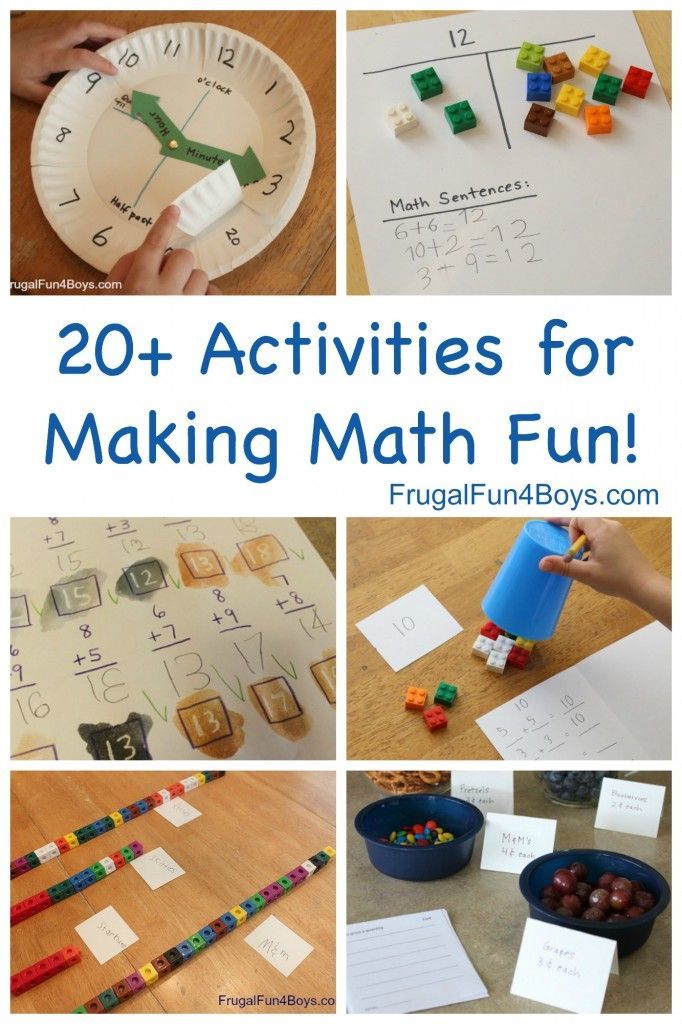 Smolentseva A.A. Accident 1998
Smolentseva A.A. Accident 1998 - Mathematics from three to six. Mikhailova Z.A. Accident 1997
- Graphic dictations. V.T. Dove. Moscow “Wako” 2004.
"Didactic games for the formation of elementary mathematical representations of preschoolers with their own hands" | Outline of a lesson in mathematics:
Master class
“Didactic games for the formation of elementary mathematical representations of preschoolers with their own hands”
Topic: “Didactic games for the formation of elementary mathematical representations of preschoolers with their own hands”
Objectives of the master class:
Improving the professional skills of teachers — master class in the process of active pedagogical communication on mastering the work experience of a teacher-master.
Master class tasks:
Acquaintance of teachers with mathematical games, creation of conditions for professional communication and stimulation of the growth of the creative potential of teachers.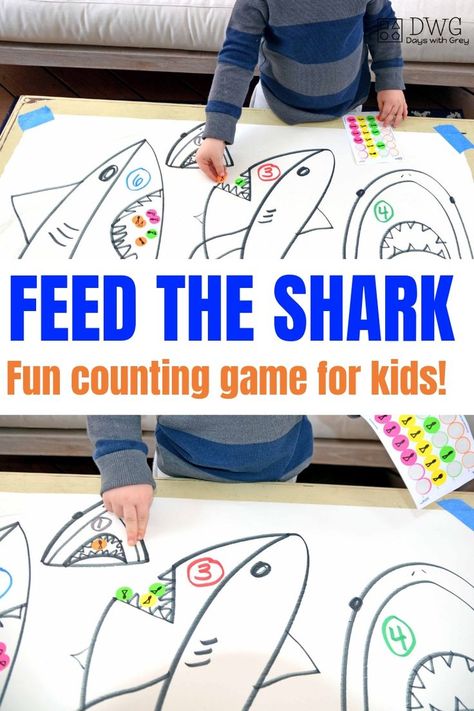
Plan of the master class:
Theoretical part.
Interactive part. Conducting didactic games with teachers.
Practical part. Making a didactic game "Number houses".
Demonstration of handmade math games.
Final part.
- Theoretical part
Mathematics is a very important science. Being engaged in mathematics, the child comprehensively develops as a person. The child learns the world around him emotionally - in a practical way. It is the game that attracts our attention with a rich palette of various feelings and experiences of the players, their enthusiasm. There are many different types of games, but it is didactic games that help overcome difficulties in teaching children.
At preschool age, the game is of the utmost importance in the life of a small child - the game for them is study, the game for them is work, the game for them is a serious form of education. The need for play in children persists and occupies a significant place even during the first years of their schooling.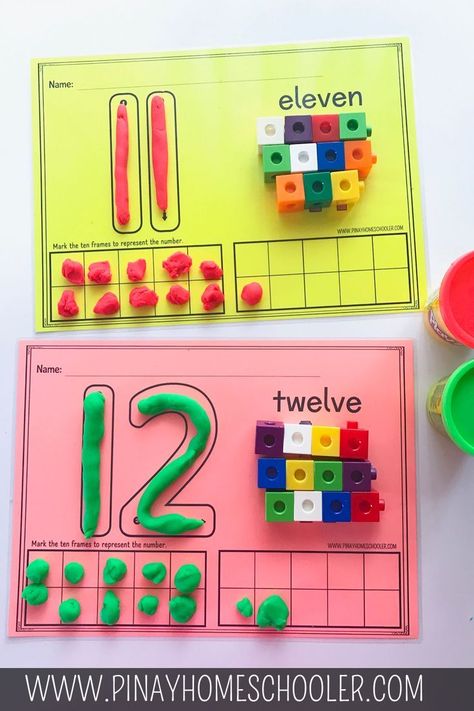 Children are the creators of the present and the future. This is the charm of the game. In the game, the child makes discoveries that have long been known to adults. Children do not set any other goals in the game than to play.
Children are the creators of the present and the future. This is the charm of the game. In the game, the child makes discoveries that have long been known to adults. Children do not set any other goals in the game than to play.
The need for play and the desire to play among preschoolers must be used and directed in order to solve certain educational problems. The game will be a means of education if it is included in a holistic pedagogical process. Leading the game, organizing the life of children in the game, the educator influences all aspects of the development of the child's personality: feelings, consciousness, will and behavior in general. In the game, the child acquires new knowledge, skills and abilities.
Didactic games in the pedagogical process play a dual role: firstly, they are a teaching method, and secondly, they are independent game activities. As the first, they are widely used in classes to familiarize children with the environment, with wildlife, for the formation of elementary mathematical concepts, the development of speech in order to teach children certain ways of mental actions, systematization, clarification and consolidation of knowledge.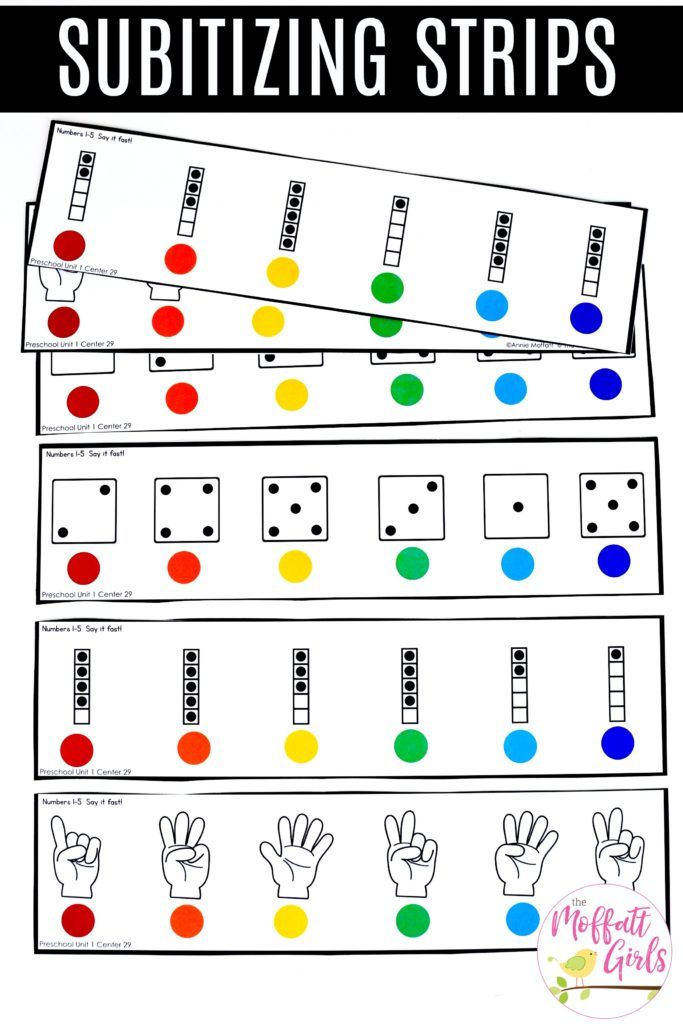 At the same time, the content of the game and its rules are subordinated to the educational tasks put forward by the specific program requirements of a particular type of activity. The initiative in choosing and conducting the game belongs in this case to the educator. As an independent gaming activity, they are carried out outside of school hours.
At the same time, the content of the game and its rules are subordinated to the educational tasks put forward by the specific program requirements of a particular type of activity. The initiative in choosing and conducting the game belongs in this case to the educator. As an independent gaming activity, they are carried out outside of school hours.
In both cases, the teacher leads the didactic games, but the role is different. If in the classroom he teaches children how to play, introduces the rules and game actions, then in independent games of pupils he participates as a partner or arbitrator, monitors their relationship, evaluates behavior.
Games with Gyenesh logic blocks.
- Practical part. Making a didactic game "Number houses".
Didactic game "Number houses"
Materials: cardboard (red, blue or green), scissors, glue or glue stick, number cards.
First, we cut out rectangles (bricks) 2x3 cm in size from blue or green cardboard, red triangles (the roof of the house).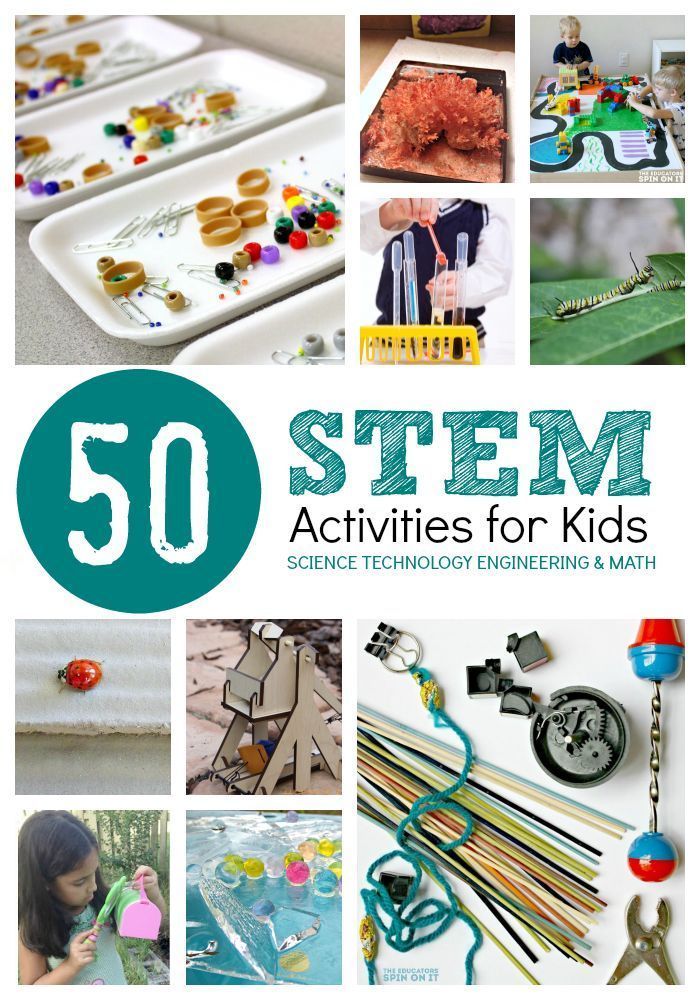
Then cut out the numbers.
Glue the numbers on the rectangles in such a way that their sum shows the composition of the number.
For example, the number 8 can be made up of two smaller numbers 2 and 6.
As a result, such houses are obtained that will help a preschool child to consolidate ideas about the composition of numbers from two smaller numbers (within 10).
And now I'm going to show you some DIY math games.
Fishing game. Purpose of the game: To consolidate ideas about the composition of numbers from two smaller numbers (within 10).
Objectives of the game:
1. Continue learning to match numbers with numbers.
2. To consolidate knowledge about the formation of numbers in the range from 5 to 10 and decompose them into two smaller ones.
The game "Tangram"
Purpose of the game: To teach children to play puzzle games on their own, to be able to lay out a variety of silhouettes from a set of geometric shapes.